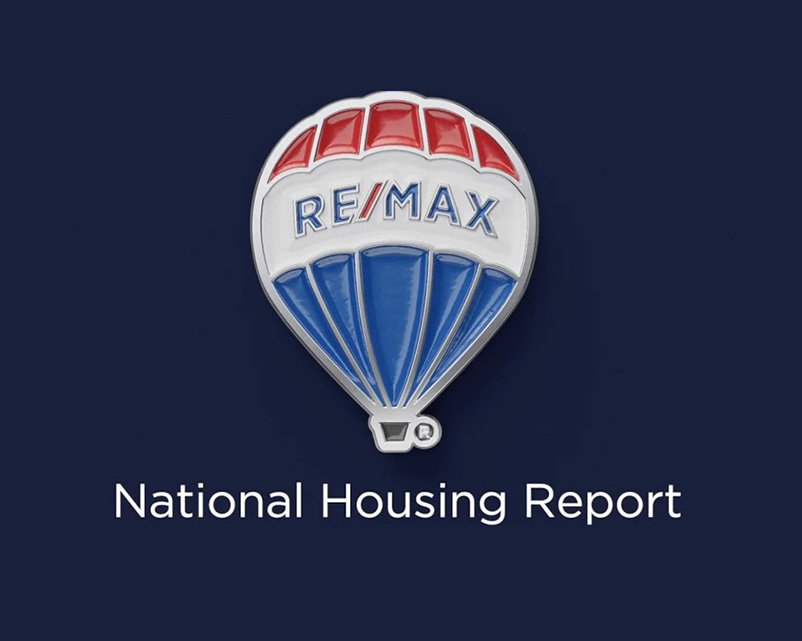In a third of the markets of the 50 metros areas surveyed, buyers on average paid 98% or less, while in a quarter of the markets the average buyer paid 100% or more. At the current median sales price, 1% is equivalent to approximately $4,000.
Meanwhile, inventory held relatively steady and dropped just 0.6% from January. Months supply of inventory (1.9) declined slightly from January’s 2.1, but was up from last February’s 1.6, and the number of homes for sale was 10.8% higher than a year ago.
In another indicator of increased demand, homes took an average of 44 days to sell in February – two days faster than January and one day faster than February 2023.
“The February jump in sales activity illustrates the strength of demand in many markets. Buyers are out there looking for homes,” said RE/MAX President Amy Lessinger. “Investing in real estate is still one of the best ways to build wealth. As the market has continued to rebalance, both buyers and sellers seem to be adjusting their plans and making moves they may have had on hold for a while.”
Tim Yee, a broker associate with RE/MAX Gold in the San Francisco Bay Area also saw strong buyer demand and said prices remained remarkably stable. “In San Francisco County, the list price to sales price ratio hovered around 100-106%, meaning buyers paid over asking price. Well-priced listings in good locations were swallowed up as soon as they hit the market. If the Fed does make an adjustment in interest rates or if sellers finally get tired of waiting and decide to sell, the pent-up demand could bring a more robust spring market for all.”
Highlights and local market results for February include:
Closed Transactions
Of the 50 metro areas surveyed in February 2024, the overall number of home sales was up 17.0% compared to January 2024, and up 2.3% compared to February 2023. The markets with the biggest increase in year-over-year sales percentage were Salt Lake City, UT at +16.5%, Burlington, VT at +15.1%, and Minneapolis, MN at +14.7%. The markets with the biggest decrease in year-over-year sales percentage were Tulsa, OK at -12.9%, New Orleans, LA at -11.5%, and Dover, DE at -9.5%.
Median Sales Price – Median of 50 metro area prices
In February 2024, the median of all 50 metro area sales prices was $412,000, up 2.1% compared to January 2024, and up 7.0% from February 2023. The markets with the biggest year-over-year increase in median sales price were Trenton, NJ at +23.7%, Bozeman, MT at +21.7%, followed by a tie between Dover, DE and Cleveland, OH at +16.7%. The markets with the biggest year-over-year decrease in median sales price were Burlington, VT at -9.9% and Anchorage, AK at -2.7%.
Close-to-List Price Ratio – Average of 50 metro area prices
In February 2024, the average close-to-list price ratio of all 50 metro areas in the report was 99%, up compared to 98% in both January 2024 and February 2023. The close-to-list price ratio is calculated by the average value of the sales price divided by the list price for each transaction. When the number is above 100%, the home closed for more than the list price. If it’s less than 100%, the home sold for less than the list price. The metro areas with the highest close-to-list price ratios were San Francisco, CA at 104%, followed by a tie between Hartford, CT and Manchester, NH at 102%. The metro areas with the lowest close-to-list price ratio were Miami, FL at 95% and New Orleans, LA at 96%.
Days on Market – Average of 50 metro areas
The average days on market for homes sold in February 2024 was 44, down two days compared to the average in January 2024, and down one day compared to February 2023. The metro areas with the lowest days on market were Baltimore, MD at 16, Washington, DC at 17, and Trenton, NJ at 20. The highest days on market averages were in Fayetteville, AR at 86, Des Moines, IA at 74, and Coeur d’Alene, ID at 72. Days on market is the number of days between when a home is first listed in an MLS and a sales contract is signed.
Months’ Supply of Inventory – Average of 50 metro areas
The number of homes for sale in February 2024 was down 0.6% from January 2024 and up 10.8% from February 2023. Based on the rate of home sales in February 2024, the months’ supply of inventory was 1.9, down from 2.1 in January 2024, and up from 1.6 in February 2023. In February 2024, the markets with the highest months’ supply of inventory were Miami, FL at 4.3, New Orleans, LA at 4.2, and Bozeman, MT at 4.1. The markets with the lowest months’ supply of inventory were Seattle, WA at 0.6, Manchester, NH at 0.7, followed by a tie between Baltimore, MD and Trenton, NJ at 0.8.
About the RE/MAX Network
As one of the leading global real estate franchisors, RE/MAX, LLC is a subsidiary of RE/MAX Holdings (NYSE: RMAX) with more than 140,000 agents in over 9,000 offices and a presence in more than 110 countries and territories. Nobody in the world sells more real estate than RE/MAX, as measured by residential transaction sides. RE/MAX was founded in 1973 by Dave and Gail Liniger, with an innovative, entrepreneurial culture affording its agents and franchisees the flexibility to operate their businesses with great independence. RE/MAX agents have lived, worked and served in their local communities for decades, raising millions of dollars every year for Children’s Miracle Network Hospitals® and other charities. To learn more about RE/MAX, to search home listings or find an agent in your community, please visit www.remax.com. For the latest news about RE/MAX, please visit news.remax.com.
Report Details
The RE/MAX National Housing Report is distributed monthly on or about the 15th. The Report is based on MLS data for the stated month in 50 metropolitan areas, includes single-family residential property types, and is not annualized. For maximum representation, most of the largest metro areas in the country are represented, and an attempt is made to include at least one metro area in almost every state. Metro areas are defined by the Core Based Statistical Areas (CBSAs) established by the U.S. Office of Management and Budget.
Definitions
Closed Transactions are the total number of closed residential transactions during the given month. Months Supply of Inventory is the total number of residential properties listed for sale at the end of the month (current inventory) divided by the number of sales contracts signed (pending listings) during the month. Where “pending” data is unavailable, an inferred pending status is calculated using closed transactions. Days on Market is the average number of days that pass from the time a property is listed until the property goes under contract. Median Sales Price for a metro area is the median sales price for closed transactions in that metro area. The nationwide Median Sales Price is calculated at the nationwide aggregate level using all sale prices from the included metro areas. The Close-to-List Price Ratio is the average value of the sales price divided by the list price for each closed transaction.
MLS data is provided by Seventy3, LLC, a RE/MAX Holdings company. While MLS data is believed to be reliable, it cannot be guaranteed. MLS data is constantly being updated, making any analysis a snapshot at a particular time. Every month, the previous period’s data is updated to ensure accuracy over time. Raw data remains the intellectual property of each local MLS organization.

